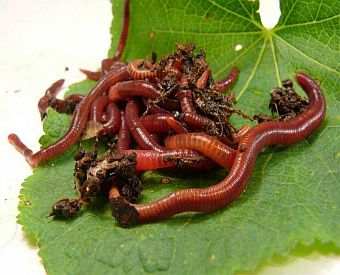Highly efficient red worms: Best environments for success
Highly efficient red worms: Best environments for success
Blog Article
Everything You Need to Know Regarding Red Wigglers for Composting
Red wigglers, or Eisenia fetida, play a critical function in the world of composting, changing organic waste right into useful soil amendments. Their special biological traits enable them to prosper in numerous problems, making them an excellent choice for both amateur and knowledgeable composters alike. Comprehending their demands and advantages is important for developing a productive vermicomposting system. The procedure of establishing up a worm container and keeping it can posture obstacles. To successfully harness the possibility of these worms, one must explore the ins and outs of their treatment and management.
What Are Red Wigglers?

(buy red wiggler worms)
Native to The United States and copyright, red wigglers are surface-dwelling microorganisms that choose damp, cozy habitats rich in decaying raw material. Their diet is composed mostly of rotting plant material, food scraps, and various other natural particles, which they consume and damage down successfully. As they absorb this product, they produce nutrient-rich castings that enhance soil fertility.
Red wigglers are hermaphroditic, possessing both male and women reproductive organs, and can recreate swiftly under optimal conditions. Overall, red wigglers are vital contributors to the procedure of reusing organic waste right into beneficial garden compost.
Advantages of Making Use Of Red Wigglers
Using red wigglers in composting systems supplies many benefits that boost both the performance of waste management and the quality of the resulting compost. These worms, scientifically called Eisenia fetida, are especially reliable at breaking down raw material, turning kitchen area scraps and backyard waste into nutrient-rich compost at an accelerated rate.
One of the main advantages of making use of red wigglers is their ability to eat large amounts of natural material, commonly refining their weight in food waste daily. This high consumption price results in much faster disintegration and lowers the quantity of waste sent out to landfills. Furthermore, the castings created by red wigglers are rich in essential nutrients, advantageous bacteria, and enzymes, making them a superb fertilizer for gardens and plants.
Additionally, red wigglers flourish in a range of settings, making them adaptable for both interior and exterior composting systems - red wigglers. Their presence in a garden compost container aids to freshen the product, stopping smells and advertising a healthy and balanced composting procedure. Generally, utilizing red wigglers not only contributes to effective waste administration however likewise sustains sustainable horticulture practices through the manufacturing of premium garden compost
(red wiggler worms near me)
Establishing Your Worm Bin
To effectively establish a worm container, it is necessary to select a suitable next page container that fulfills the demands of red wigglers while providing a favorable setting for composting. A suitable container can be made from plastic, wood, or metal, with an ability of a minimum of 1 square foot for each extra pound of worms.
Make sure the container has adequate drain openings to stop excess moisture, as red wigglers flourish in a moist, yet not waterlogged, setting. red wigglers. The container must also be aerated to provide adequate airflow, protecting against anaerobic problems that might harm the worms
A suitable location for the worm container is a cool, dark area, complimentary from straight sunlight and severe temperatures, as red wigglers choose a temperature level variety of 55 to 77 levels Fahrenheit.
Before introducing the worms, prepare bedding materials such as shredded paper, cardboard, or coconut coir, which will certainly provide both habitat and food. Dampen the bed linen lightly to create a welcoming atmosphere for the worms. Think about positioning a lid on the container to keep humidity and lower bugs, while guaranteeing it can be conveniently gotten rid of for upkeep.
Feeding and Care Guidelines
Feeding red wigglers is an important aspect of preserving a healthy and balanced composting system. These worms thrive on a varied diet, primarily made up of organic products such as fruit and veggie scraps, coffee premises, and smashed eggshells. It is vital to avoid feeding them meat, milk, and oily foods, as these can develop unpleasant odors and bring in insects.
When presenting food to your worm container, cut or shred materials into smaller pieces to facilitate quicker decay. Start with small quantities to assess the worms' intake rate, progressively raising the amount as they adapt. It is recommended to alternate feeding places within the container to urge extensive mixing and oygenation of the garden compost.

Troubleshooting Common Issues
Maintaining a growing worm composting system can sometimes provide obstacles that call for attention and troubleshooting. Common issues include an undesirable odor, which frequently shows overfeeding or the existence of anaerobic conditions. To correct this, lower the quantity of food added and make certain correct aeration by mixing the bedding material.
An additional constant problem is the escape of worms from the container. This can happen because of extreme wetness or improper ecological problems. Routinely inspect the wetness degrees, intending for a moist however not soaked consistency, and maintain optimum temperature levels between 60-80 ° F(15-27 ° C )to create a comfy habitat for your red wigglers.
Pests, such as fruit flies, can likewise invade worm containers. red wigglers. To combat this, cover food scraps with a layer of bedding or shredded paper to hinder flies from laying eggs. Additionally, ensure that any type of food included is fresh and without mold, which can attract unwanted insects
Finally, if your worms seem inactive, look for stress and anxiety aspects such as temperature variations or inadequate wetness. Dealing with these usual problems will certainly help keep a healthy and efficient worm composting system.
Verdict
In recap, red wigglers, or Eisenia fetida, play a crucial function in sustainable waste management with vermicomposting. Appropriate arrangement and upkeep of a worm bin, along with adherence to feeding guidelines, ensure a successful community that decreases garbage dump payments.
Report this page